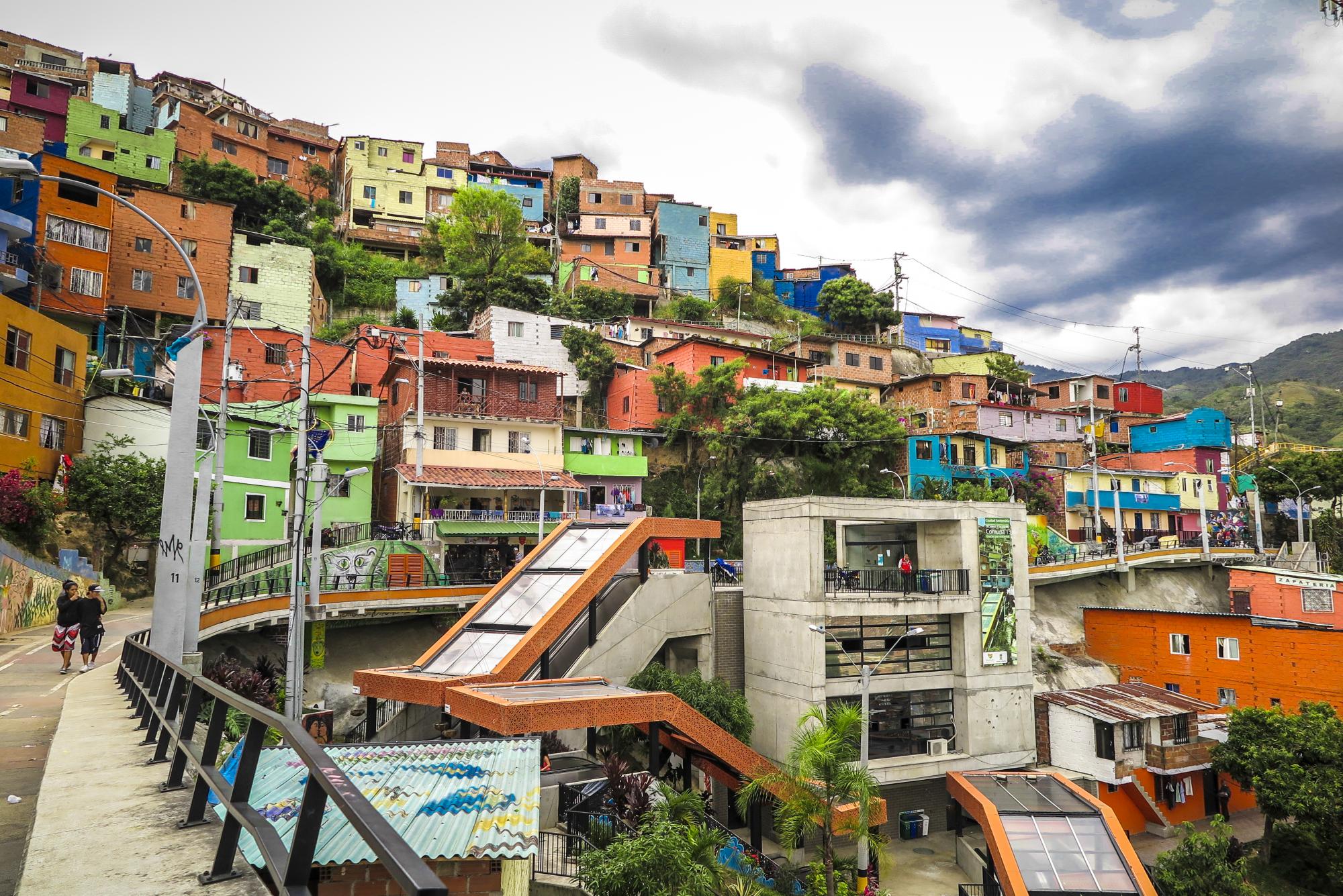


Half day tour to visit those places that best represent the social transformation that has taken place in Medellín. The tour will show the symbolic areas of Medellín from the 1980s, when the city was one of the most dangerous in the world, up to today many projects that fostered the city’s change.
Enjoy an exciting tour through the history and present of Medellin and learn more about the transformation of this fascinating metropolis. 20 years ago, Medellin was one of the most dangerous cities in the world. Back in the early 90s, when the hunt for Pablo Escobar took place, the head of Medellin’s drug cartel was at its peak. Thus, the reign of “El Patrón” came to its end. Until the turn of the millennium the struggles about Escobar’s successor continued, but since 2002 Medellin began to change. Intelligent local politicians started to invest heavily in infrastructure and public education. Today the “City of Eternal Spring” is one of the most innovative metropolises in the world.
Visit the barrio San Javier, which used to be one of the most unsafe suburbs of Medellín Located some 7km from the city centre, it is a clear example of the social transformation that has taken place in the last few years. Arrive here by the metrocable car that joins the north-east area with the city centre, which has been life changing to many of the inhabitants of Medellín. Learn more about the city’s transformation after the death of Pablo Escobar and also get to know the innovative transport-system in the poorer neighbourhoods at first hand. Explore Medellin’s newest invention: the electric stairways of the district Comuna 13, discover stories about its past by visiting the most important places marked by historical events and see some graffiti that symbolizes a form of expression of the community. Here it is possible to have a beautiful view over the city from the balconies of San Javier.
Then, go on to La Plazoleta located in the city centre, in an area that fell into decline in the 1980s and today houses 23 sculptures of Fernando Botero, donated by this famous local artist in year 2000. Since that time, the city has undergone a social and cultural transformation around these works placed in a public space.
DURATION: Approximately four hours.
NOTE: Closed on Monday.

©2022 Colombian Journeys All rights reserved